A North American Common Amphibian
Anaxyrus americanus, the scientific name for the common and well-known amphibian found in the eastern United States and Canada, is the scientific name for the American toad. These toads, distinguished by their thick bodies and characteristic warty appearance, have adapted surprisingly well to a wide range of settings. The Eastern American toad, the Dwarf American toad, and the uncommon Hudson Bay toad are the three subspecies of the American toad that are recognized.
American Toad Scientific Classification and Conservation Status
| Category | Details |
|---|---|
| Scientific Classification | |
| Kingdom | Animalia |
| Phylum | Chordata |
| Class | Amphibia |
| Order | Anura |
| Family | Bufonidae |
| Genus | Anaxyrus |
| Scientific Name | Anaxyrus americanus |
| Conservation Status | Least Concern |
| Locations | North America |
Differentiating Features and Protection Mechanisms
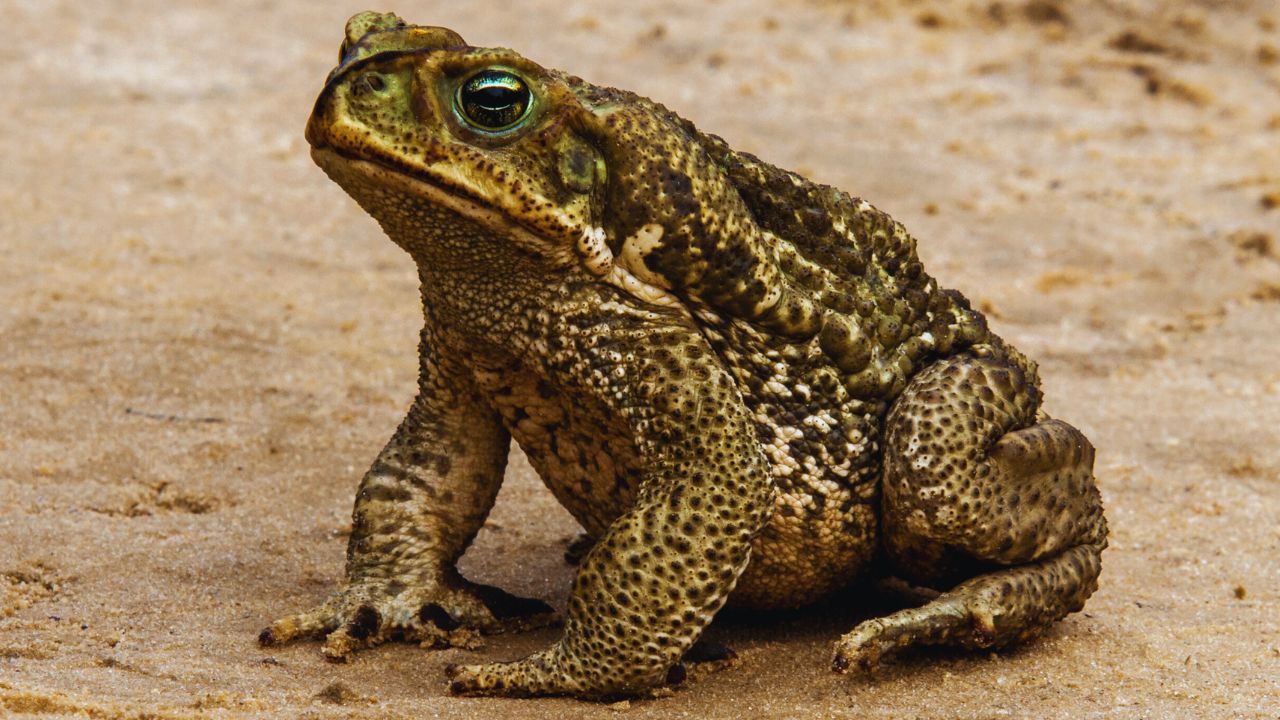
The warty skin of the American toad, which is home to glands that release a deadly milky fluid, is one of its most distinctive characteristics. This fluid uses its toxicity as a protection strategy against predators, discouraging prospective dangers. The toad’s skin may have a variety of colors; it usually ranges from brown to light olive or gray, with patches of black or yellow sometimes. The toad’s stress levels, temperature, and humidity may all affect its hue.
The number of bumps in each black splotch on the back of an Anaxyrus fowleri, the near cousin of the American toad, may be used to identify the two species. American toads only have one or two bumps per blotch, compared to three to four in Fowler’s toads. Furthermore, the belly of an American toad has black markings on it, but the belly of a Fowler’s toad is white.
Interesting Details Regarding the Reproductive Capacity of American Toads:
At a time, female American toads may deposit up to 20,000 eggs. Usually found at water’s edge, these eggs are affixed to grass or plants in long, parallel strands that resemble black beads. Within a week, the eggs hatch, and the tadpoles go through a transformation that takes 40 to 70 days to fully develop into adult toads.
Mild Toxicity:
Although American toads may be harmful to people, their venom mostly serves as protection against predators. The discharge is seldom fatal, although it may irritate eyes and mucous membranes when it comes into contact with them.
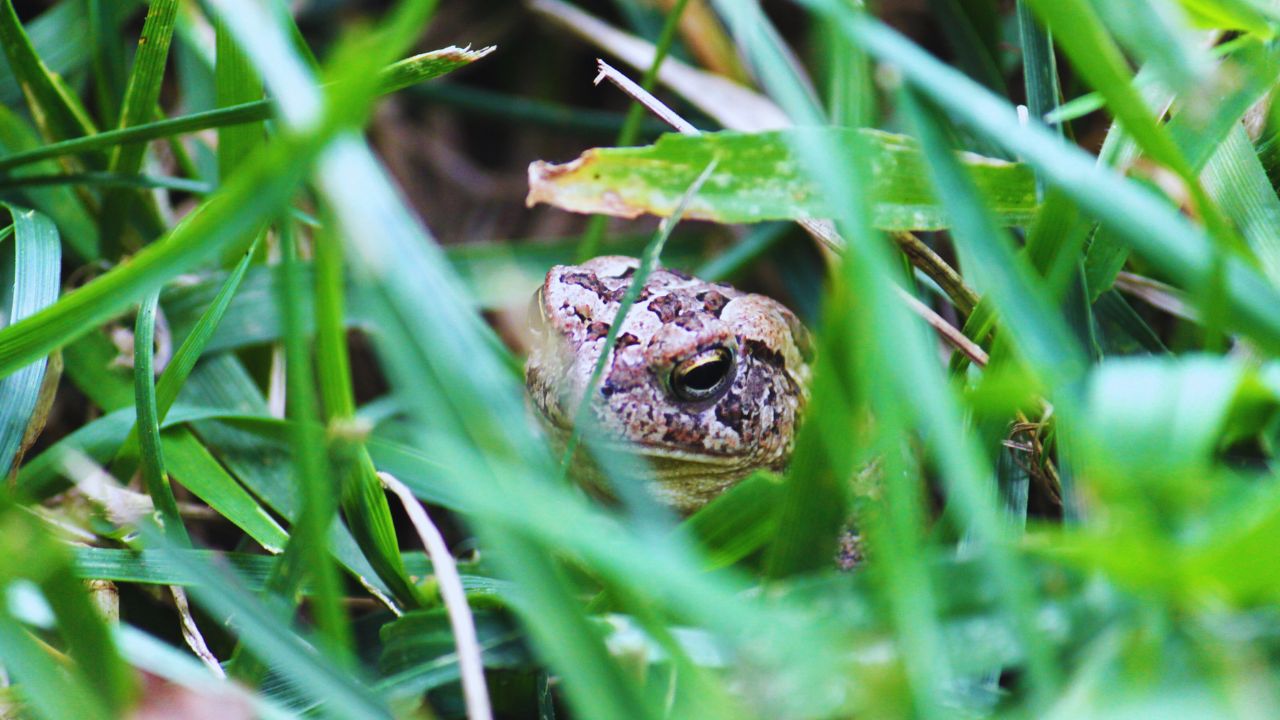
American toads are skilled at pretending to be dead in order to evade predators. Because of this habit as well as their capacity for camouflage, they are very difficult for predators to find.
Classification of Science
The taxonomic taxonomy of the American toad is as follows:
- Kingdom: Animalia
- Phylum: Chordata
- Class: Amphibia
- Order: Anura
- Family: Bufonidae
- Genus: Anaxyrus
- Species: A. americanus
“Americanus” is the name given to the toad’s geographic range in America; “anaxyrus” is Greek in origin and means “king” or “chief,” indicating the toad’s importance in its natural environment.
Origins of Evolution and Adaptations
The American toad and other toad species are well suited to living on land. Compared to most frogs, they have thicker, more resilient skin that helps with protection and moisture retention. Because their rear feet have some webs on them, they may burrow into the ground to control their body temperature in different regions. The American toad belongs to the family Bufonidae, which originated in South America’s tropical areas and then expanded to other parts of the globe.
American Toad Facts
| Category | Details |
|---|---|
| Prey | Aquatic vegetation and algae, a variety of insects and invertebrates, slugs, beetles, snails, and earthworms |
| Name of Young | Tadpoles |
| Group Behavior | Solitary/Group |
| Fun Fact | They secrete a milky, poisonous liquid that can make many animals sick |
| Estimated Population Size | Unknown, due to constant fluctuations in different regions |
| Biggest Threat | Snakes (Eastern hognose snakes) |
| Most Distinctive Feature | Warts on skin |
| Gestation Period | 2-14 days |
| Litter Size | 4,000-8,000 eggs |
| Habitat | Semi-permanent pools or ponds, dense vegetation patches |
| Predators | Snakes (Eastern hognose snakes) |
| Diet | Carnivorous |
| Type | Frog (Amphibian) |
| Common Name | American Toad |
| Number of Species | 3 |
| Location | Semi-permanent pools or ponds, dense vegetation patches |
Characteristics and Morphology

The short legs and warty skin of American toads give them a muscular look. As a kind of defense, the warts, which are often red or yellow, release a deadly milky substance. The skin of most American toads is brown, although others have areas of pale olive, grey, yellow, or black. Stress and environmental factors may alter the color of the skin.
With webbing linking the toes, these toads normally have four on each front leg and five on each rear leg. Their eyes feature oval-shaped, gold-outlined black pupils. The necks of male American toads are typically dark, either black or brown, whereas the throats of females are lighter and white. With body sizes ranging from 50 to 100 mm, but most average 75 mm, females are often bigger than males.
Knowing the American Toad: Ecology, Habits, Nutrition, and More
In the eastern United States and Canada, the American toad (Anaxyrus americanus) is a well-known amphibian. These toads, which are distinguished by their thick bodies and warty skin, display a variety of behaviors and adaptations that allow them to flourish in a variety of settings.
Behavior
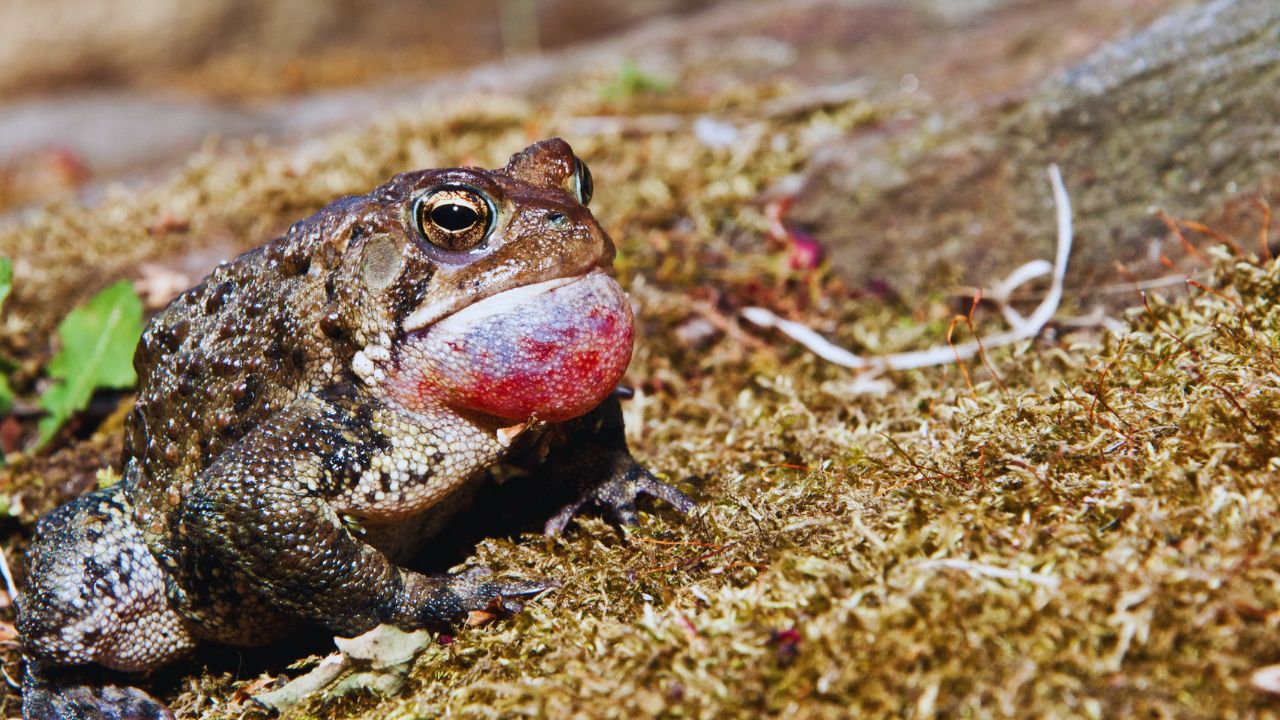
Most American toads are nocturnal creatures, and they are most active during warm, humid weather. Only in the late spring or early summer, when they reproduce, can these isolated animals join together. They hide throughout the day behind logs, rocks, or by digging tunnels into the earth and fallen leaves in order to remain damp and unseen. American toads seek out new hibernation spots or go deeper into their summer nests as winter draws near in order to survive the harsh months.
Male toads make extended, trilling noises that span anywhere from four to twenty seconds in order to entice ladies. These toads have unique cries. These cries became louder and more frequent during mating season. When the males call, their mouths expand like balloons, producing an audible and visual signal. American toads use touch, chemical signals, and body postures in addition to vocalizations to communicate.
Residence
The habitat of the American toad is varied, including backyards, gardens, and fields, as well as woods. For proper growth, the three subspecies of toads—the Eastern American toad, the dwarf American toad, and the endangered Hudson Bay toad—need certain environmental circumstances. For reproducing, they need semi-permanent pools or ponds, as well as thick foliage for hiding places and hunting areas.
Due to their adaptability, American toads may be found in urban areas, gardens, and agricultural fields. They are often seen during the day as they seek cover under boardwalks, porches, or flat stones. They retreat into their summer habitats or choose new locations to hibernate when winter draws near.
Nutrition
As adults, American toads consume a wide range of insects and invertebrates, such as slugs, beetles, snails, and earthworms. They are adept hunters; they use their front legs to manage bigger food items and their sticky tongues to capture prey. An American toad can eat up to 1,000 insects a day, which is astonishing. Toads, in contrast to many other animals, absorb water via their skin rather than drinking it.
Toad tadpoles, on the other hand, eat algae and aquatic plants; they are herbivorous. Their transition from a herbivorous diet to a carnivorous one as adults demonstrates their versatility and enables them to flourish in a variety of settings.
Threats and Predators
American toads are mostly preyed upon by snakes, especially eastern hognose snakes. Certain snakes are skilled hunters because they have become immune to the toad’s poisonous secretions. American toads may pee on themselves to make themselves less attractive to predators or expand their body to make it harder for them to swallow.
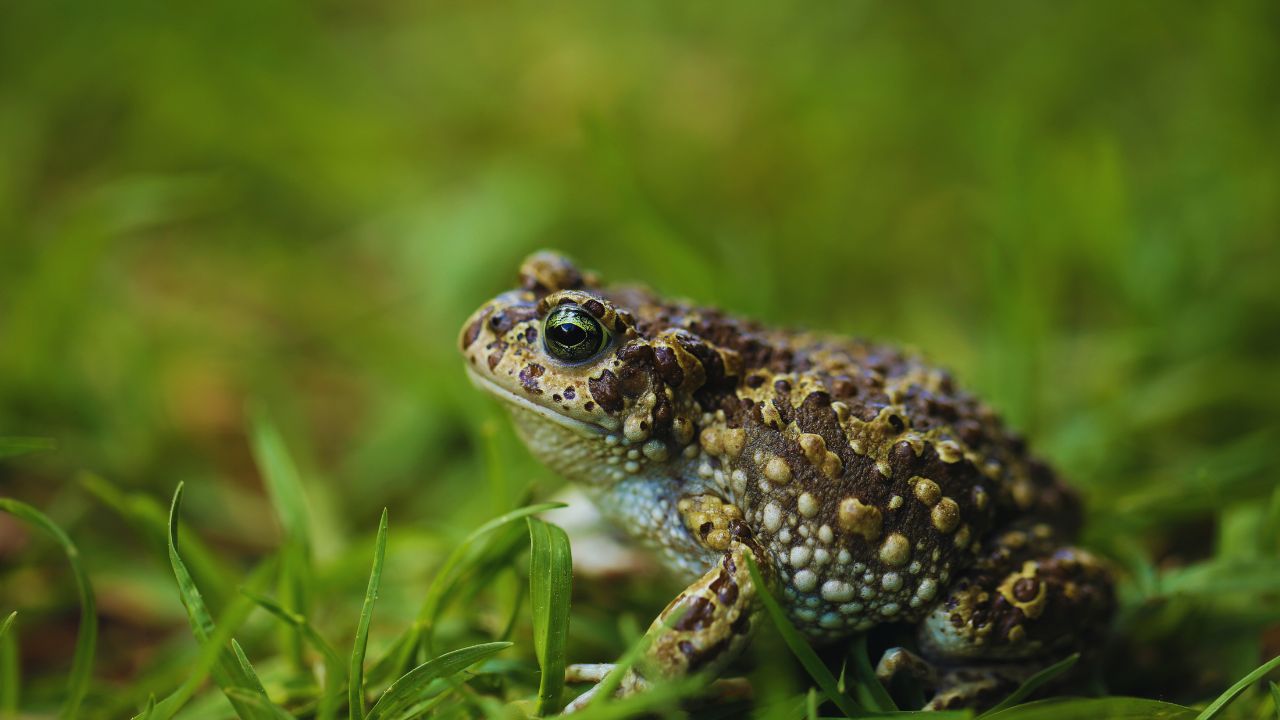
American toad breeding usually takes place in March and April, with occasional breeding occurring into July. Their reproductive habits are triggered by longer days and warmer temperatures. Prior to calling for females, male toads mark and defend their territories when they arrive at mating areas early. The cries and territories of the males influence the female toads’ decision to mate.
Males grow dark-horned pads on their forelegs during mating in order to firmly hold females. Each female produces between 4,000 and 8,000 eggs, which are laid in long, spiraling tubes of jelly in water. These eggs take 3 to 12 days to hatch, and the tadpoles need 40 to 70 days to go through a metamorphosis before becoming adult toads, usually in the months of June through August.
It takes American toads between two and three years of age to attain sexual maturity. Due to predators and harsh environmental conditions, many young toads do not make it through their first year; nevertheless, those that do have the potential to live for ten years or more in the wild.
Population
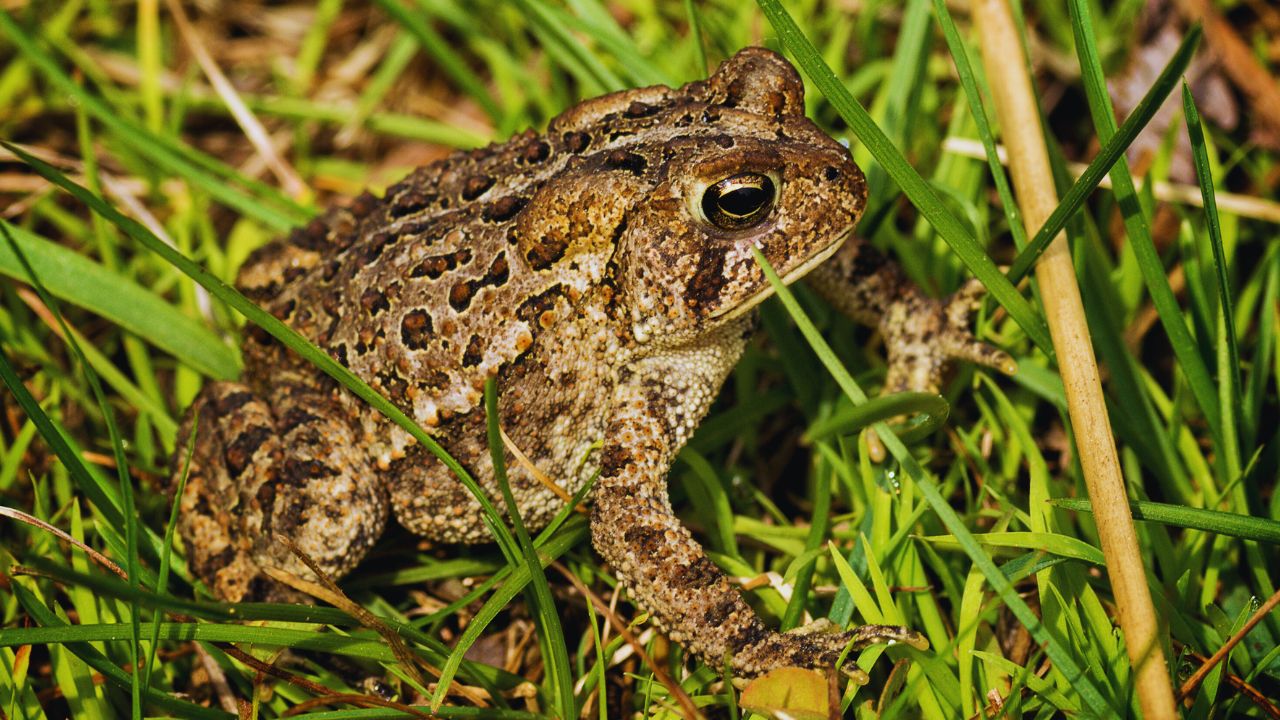
Although the precise number of American toads is unclear, their extensive distribution and adaptability have earned them the designation of “Least Concern” species. Overall, toad populations continue to flourish in most of their native areas; however, they may vary depending on environmental circumstances and the survival rate of young toads.
American Toad Physical Characteristics
| Category | Details |
|---|---|
| Color | Brown, Grey, Olive, Light-Brown |
| Skin Type | Permeable |
| Lifespan | More than 10 years in captivity; usually 1-2 years in the wild |
| Weight | Less than 1 lb |
| Height | 50 to 100 mm |
| Length | 50 to 100 mm |
| Age of Sexual Maturity | 2 to 3 years |
FAQs (Frequently Asked Questions) about American Toads
Can you classify the American toad as an omnivore, herbivore, or carnivore?
As carnivores, adult American toads consume a wide variety of insects and other invertebrates, including earthworms, slugs, beetles, and snails. On the other hand, toad tadpoles are herbivorous, mostly eating algae and aquatic plants.
Is there poison in American toads?
Indeed, the epidermis of the American toad is covered with warty glands that release a deadly, milky fluid. Although this poison usually poses little danger until swallowed or if it gets in the eyes, it may make a lot of animals sick.
Are American toads poisonous to dogs?
It is true that many animals, including dogs, may get sick from the secretions from the skin of the American toad.
Can an American toad be kept as a pet?
American toads are not often kept as pets, although they may be maintained in captivity by those who understand their needs for their upkeep.
How large do toads in America grow?
American toads are normally between 50 and 100 millimeters in size, with an average of around 75 millimeters.
And what do toads in America eat?
Slugs, beetles, snails, and earthworms are just a few of the many insects and other invertebrates that mature American toads eat. In contrast, toad tadpoles are herbivorous, mostly consuming algae and aquatic plants for food.





